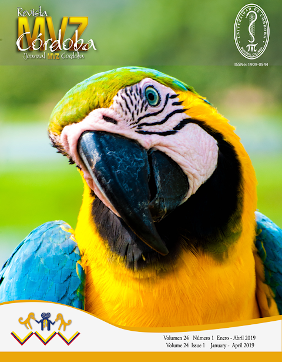Control of Haematobia irritans and Stomoxys calcitrans with Metarhizium anisopliae in naturally infested cattle
Control de Haematobia irritans y Stomoxys calcitrans con Metarhizium anisopliae en ganado naturalmente infestado
Show authors biography
Objective. Assess the efficacy of Metarhizium anisopliae strain 135 (Ma135) applied by aspersion to reduce simultaneous infestation of Haematobia irritans and Stomoxys calcitrans in naturally infested cattle maintained in a production system which combine grazing and confinement in pens. Materials and methods. Was applied an aqueous formulation of Ma135 (1x108 conidia/ml) on a nine cows group in six occasions with seven days interval, while the control group received the same formulation without conidial content. The infestation index was estimated daily for each fly independently; the effectiveness of the formulation was calculated using the Abbott’s formula. Results. The Ma135 formulation had a reduction in the fly population of 58% for H. irritans and 69% for S. calcitrans, taking into consideration the six study weeks, in addition to causing no negative effects on animal health. An Infestation index reduction was observed from the first week post-treatment (p<0.05) and maintained this trend throughout the study. Conclusions. The present study has demonstrated the potential of strain Ma135 to reduce the simultaneous infestation of both hematophagous flies in cattle under conditions of natural infestation.
Article visits 2911 | PDF visits
























